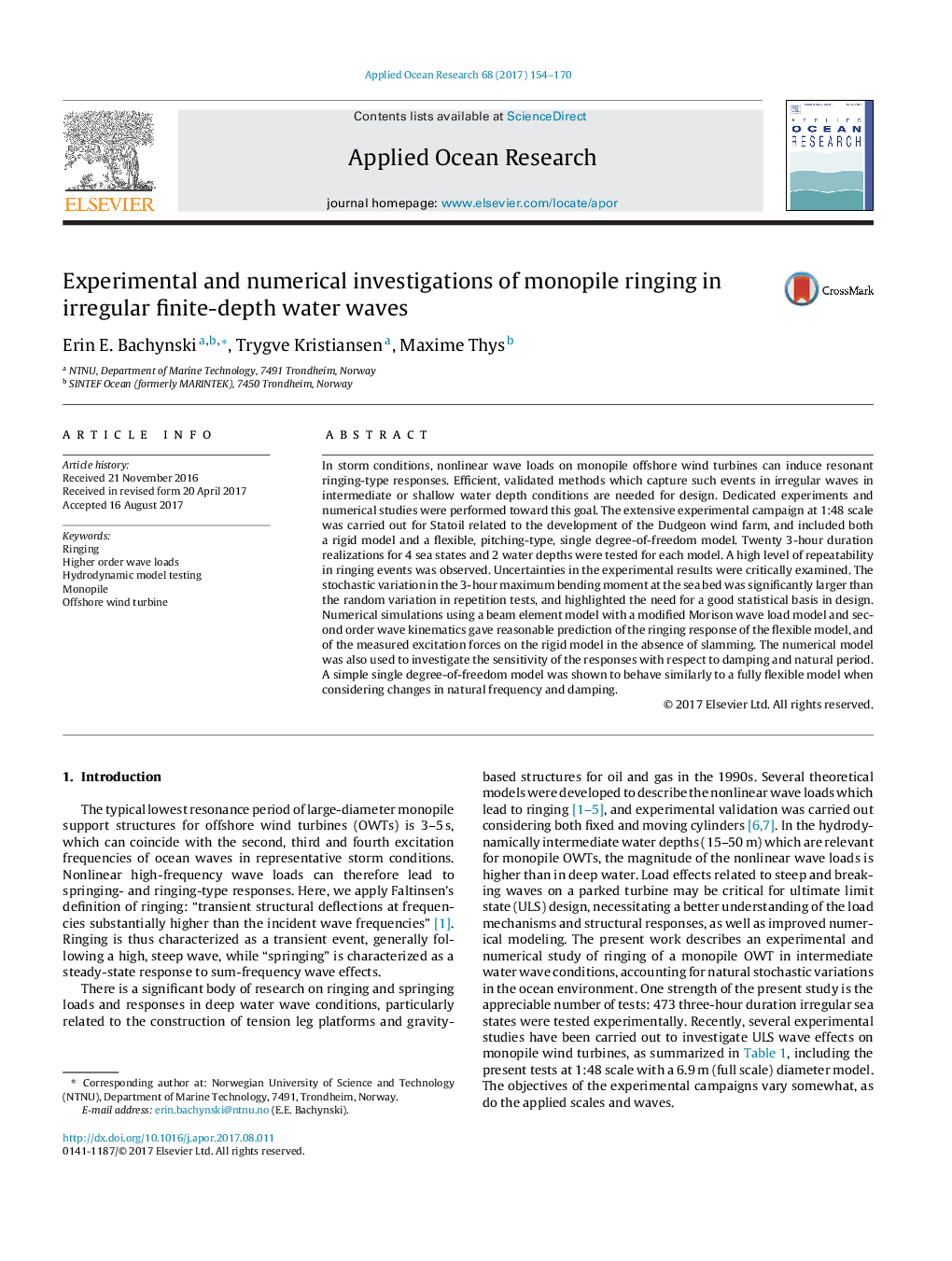| Article ID | Journal | Published Year | Pages | File Type |
|---|---|---|---|---|
| 5473161 | Applied Ocean Research | 2017 | 17 Pages |
Abstract
In storm conditions, nonlinear wave loads on monopile offshore wind turbines can induce resonant ringing-type responses. Efficient, validated methods which capture such events in irregular waves in intermediate or shallow water depth conditions are needed for design. Dedicated experiments and numerical studies were performed toward this goal. The extensive experimental campaign at 1:48 scale was carried out for Statoil related to the development of the Dudgeon wind farm, and included both a rigid model and a flexible, pitching-type, single degree-of-freedom model. Twenty 3-hour duration realizations for 4 sea states and 2 water depths were tested for each model. A high level of repeatability in ringing events was observed. Uncertainties in the experimental results were critically examined. The stochastic variation in the 3-hour maximum bending moment at the sea bed was significantly larger than the random variation in repetition tests, and highlighted the need for a good statistical basis in design. Numerical simulations using a beam element model with a modified Morison wave load model and second order wave kinematics gave reasonable prediction of the ringing response of the flexible model, and of the measured excitation forces on the rigid model in the absence of slamming. The numerical model was also used to investigate the sensitivity of the responses with respect to damping and natural period. A simple single degree-of-freedom model was shown to behave similarly to a fully flexible model when considering changes in natural frequency and damping.
Keywords
Related Topics
Physical Sciences and Engineering
Engineering
Ocean Engineering
Authors
Erin E. Bachynski, Trygve Kristiansen, Maxime Thys,
